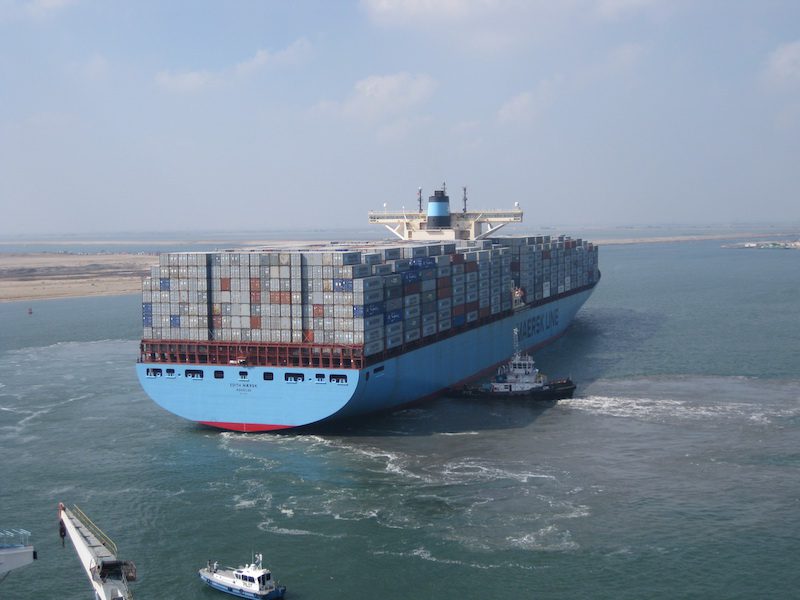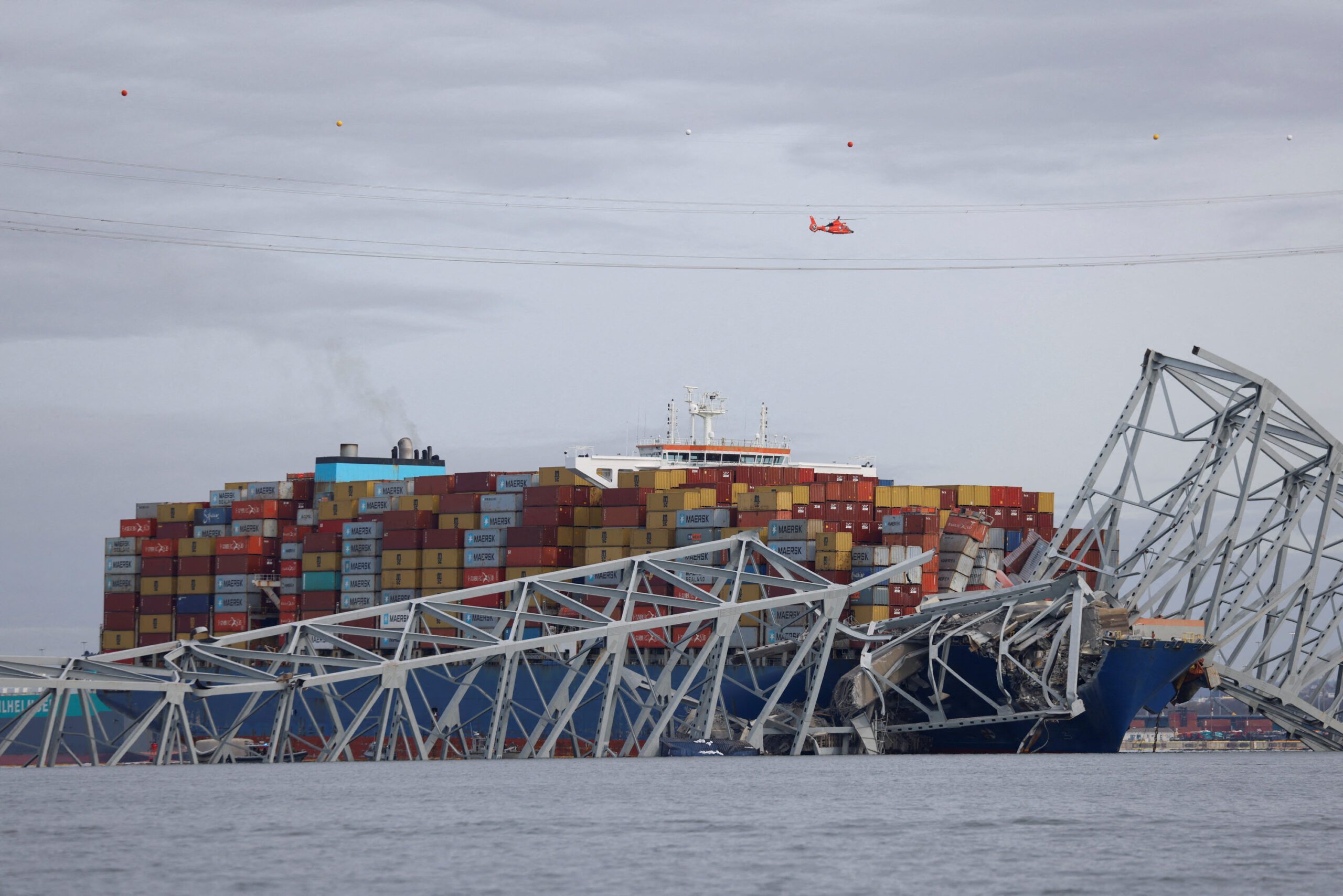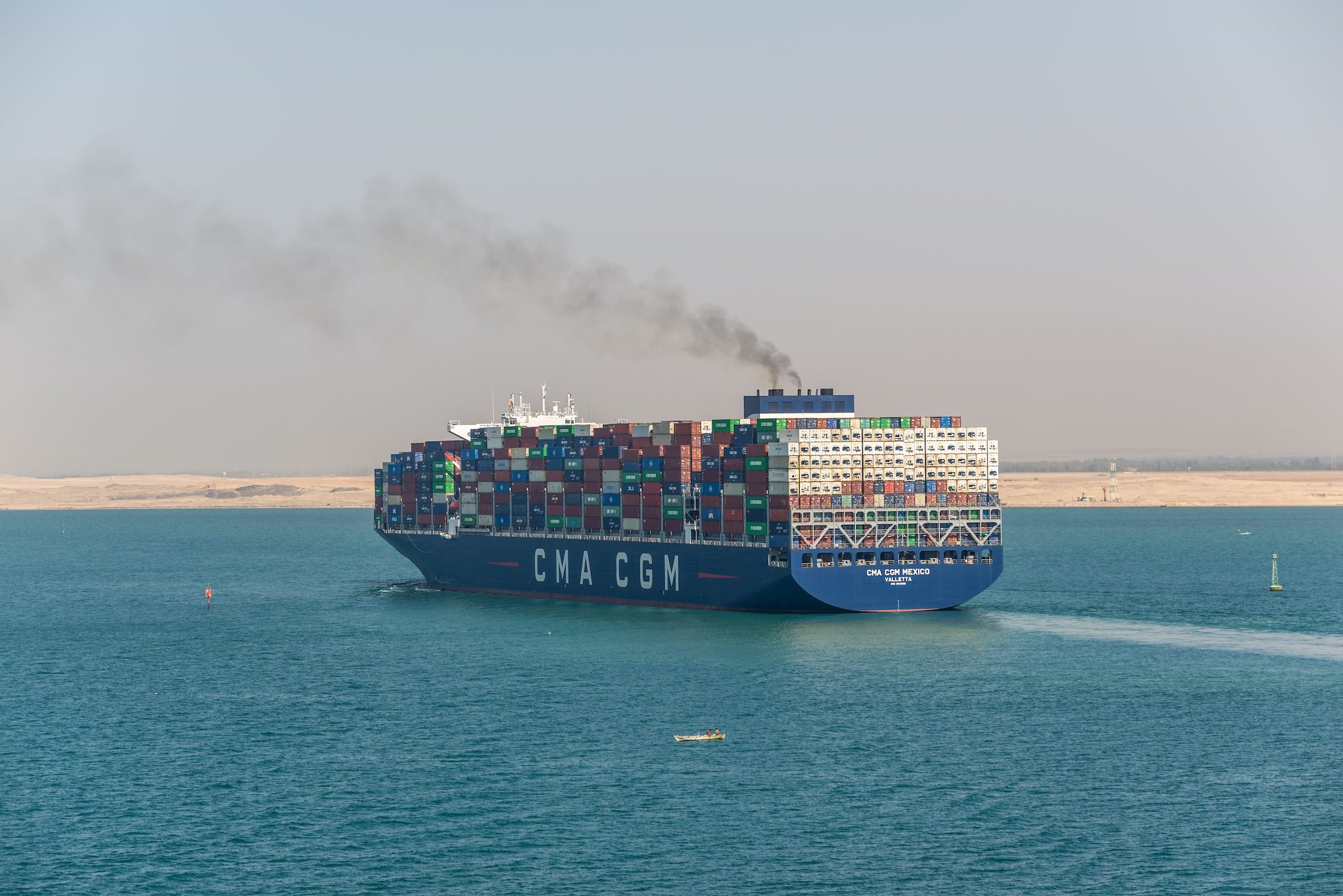Photo: APM Terminals
By Christian Wienberg
(Bloomberg) — The top-ranked analyst covering A.P. Moeller-Maersk has turned bullish on the stock.
Investors who listened to Frans Høyer over the past year have made 32 percent on their Maersk bets, the best performance of the 29 analysts tracked by Bloomberg and double the return rate delivered by the second-best forecaster.
Høyer, who works for Jyske Bank, on Wednesday changed his recommendation on Maersk shares to buy from sell and raised his 12-month price target to 12,000 kroner, which is about 18 percent above the current price. He says Maersk shares have fallen too much this year and predicts the Danish conglomerate will benefit from a “calmer” shipping market in 2016.
“We’re starting to see signs that the container shipping market is heading for better times,” Høyer, who’s vice president of equity research at Silkeborg, Denmark-based Jyske, said in a phone interview. “Maersk Line will be coming off a low in 2016 and we think the time for downgrades is over for the time being.”
Maersk shares have lost about 32 percent since an April 10 peak after the shipping market was dragged down by a toxic cocktail of too many vessels just as global demand for trade sagged. Meanwhile, Maersk’s oil unit has been pummeled by a 60 percent slump in Brent crude prices since a June 2014 peak.
To deal with the tougher market climate, the company has announced substantial job cuts in its two main units, Maersk Line and Maersk Oil.
The container unit, which is the world’s largest, said on Tuesday it plans to raise rates on its most important trade lane from Asia to Europe. While two past attempts this autumn “failed miserably,” this time will be different, Høyer said.
“This rate increase attempt comes at a time where capacity has been taken out and where there may also be an uptick in demand because there are usually some seasonal factors that help growth in December and January,” the 59-year-old analyst said. “All things equal, the combination of these two factors increases the chances of rates recovering.”
Maersk Line will also benefit from lower costs as bunker fuel prices decline, Høyer said. According to the analyst, container lines have now idled about 5 percent of the global fleet to counter oversupply, compared with just 1 percent a few months ago. That will help narrow the gap between supply and demand.
“We’re seeing more and more examples of capacity being taken out of the market and sailing itineraries being watered down somewhat, and that will help remove the imbalances we’re seeing,” he said. “We expect that container lines will be better at managing capacity in 2016.”
Maersk Line aims to have “flat” capacity growth through 2016, Chief Operating Officer Søren Toft said in a briefing on Wednesday in Singapore.
Shipping rates fell to a record low last week, based on World Container Index data. It now costs on average $862 to transport a 40-foot container, half as much as it cost a year ago and a quarter of the cost in May 2012.
“Freight rates will look a bit better next year,” Høyer said.
©2015 Bloomberg News

 Join The Club
Join The Club











